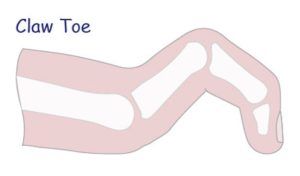Lesser Toe Deformity – What types are there?
The lesser toes represent the 2nd to 5th toes. Each toe is comprised of a long metatarsal bone, and three smaller bones called the phalanx. There are three joints in each of the toes. The MTP, PIP, and DIP joints.
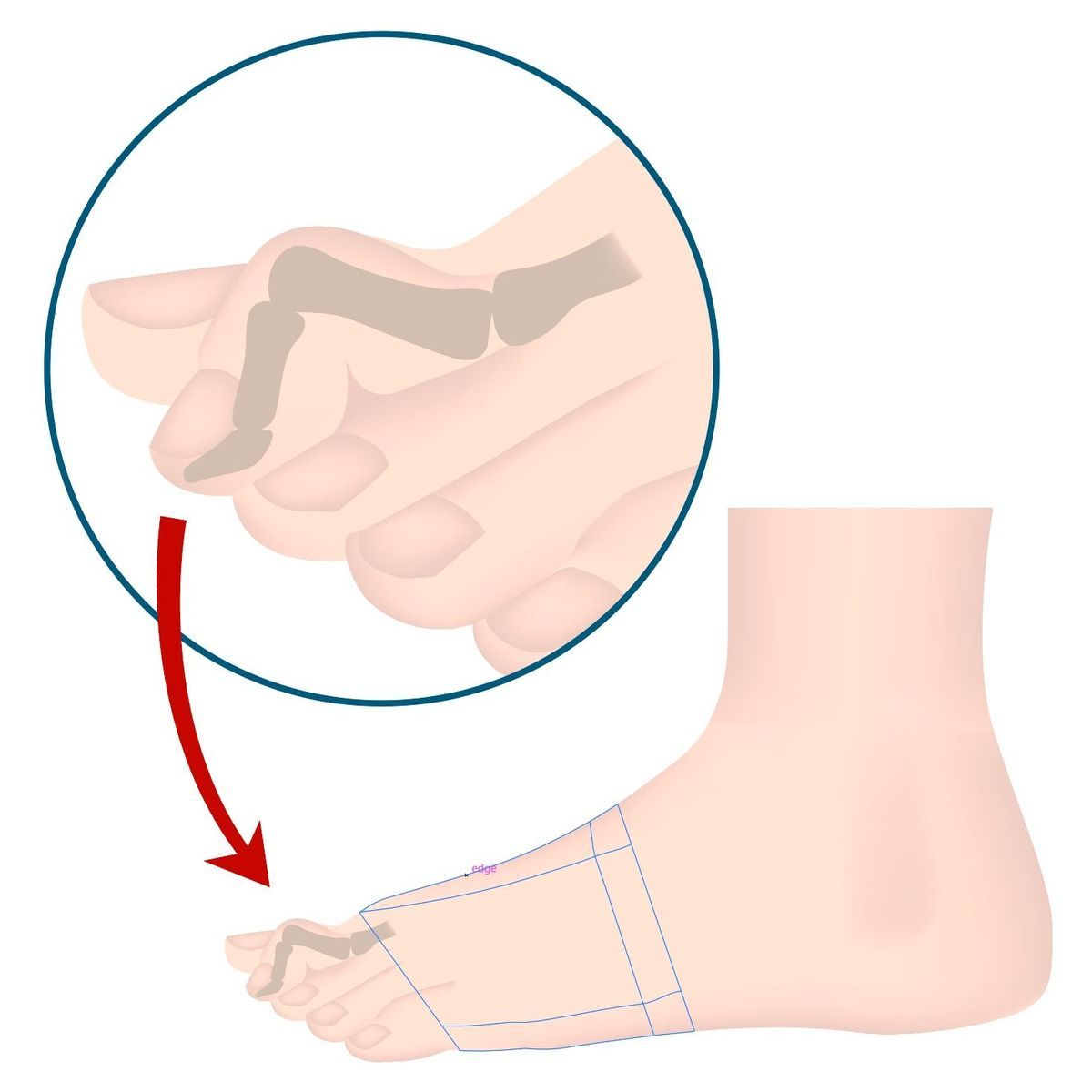
An imbalance between the normal intrinsic and extrinsic muscle forces can result in characteristic ‘deformities’ of these toes:
Mallet Toe
A Mallet toe is characterised by an isolated flexion deformity of the DIP joint. This occurs due to tightness of the flexor tendon of the toe, or loss of function of the extensor tendon.
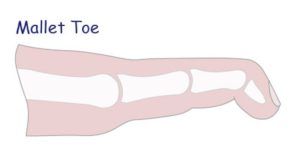
Hammer Toe
A Hammer toe is characterised by flexion of the PIP joint, and extension of the DIP joint. Hammer toes are commonly seen in combination with a bunion deformity of the Big toe.
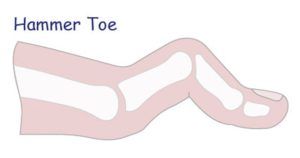
Claw Toe
A ‘Claw’ deformity is distinguished by flexion of both the PIP and DIP joints, with hyperextension of the MTP joint. ‘Clawing’ may affect multiple toes, and may have an underlying neurological cause.
Curly Toe
In a similar fashion to a ‘Claw’ toe, a ‘Curly’ Toe also has flexion of the PIP and DIP joints. The distinguishing feature is a ‘Curly’ Toe does not have the hyperextension of the MTP joint.
Cross-over Toe
When instability occurs in the MTP joint, a ‘Crossover’ toe deformity may result. In this situation, the toe will move under or over the adjacent toe.
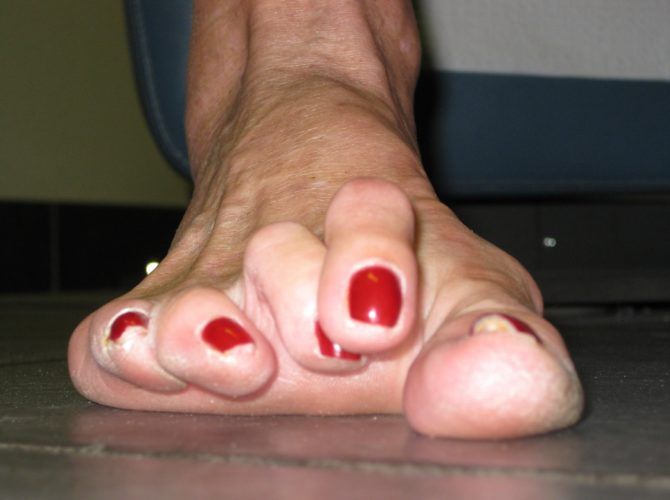
While some people experience minimal concerns with the change in shape of their toes, there are several issue that may warrant further management.
Cosmesis
Many people will not like the new appearance that their feet have acquired. Over time, these deformities often worsen, and a deteriorating cosmetic appearance is a common reason for seeking management.
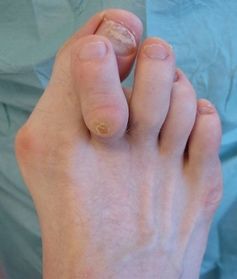
Callus/ Ulcer formation
The development of bent toes, often results in difficulty with shoe wear. Constant friction between the top of the toe and the shoe results in callus formation and skin breakdown.
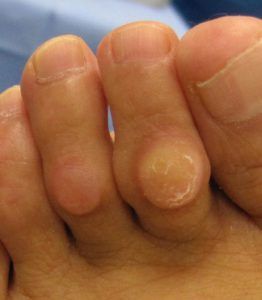
Development of arthritis
With progression of these deformities, arthritis typically occurs in the small joints of the toe. This can result in pain and stiffness.
Bent Toes | Lesser Toe Deformity – Treatment options
Non-surgical management of these deformities is focused on relieving the pressure on the toe. A combination of shoe alterations, foam or gel sleeves, or metatarsal pads may provide benefit.
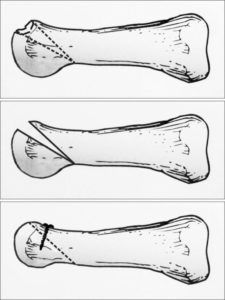
Toe realignment procedures
Surgical management of lesser toe deformities is aimed at re-aligning the toe and relieving pressure areas and stabilising painful arthritic joints.
Via a combination of tight tendon releases, fusions of small arthritic joints, and correction of bony alignment, Dr. Smith surgically straightens bent toes (lesser toe deformities).
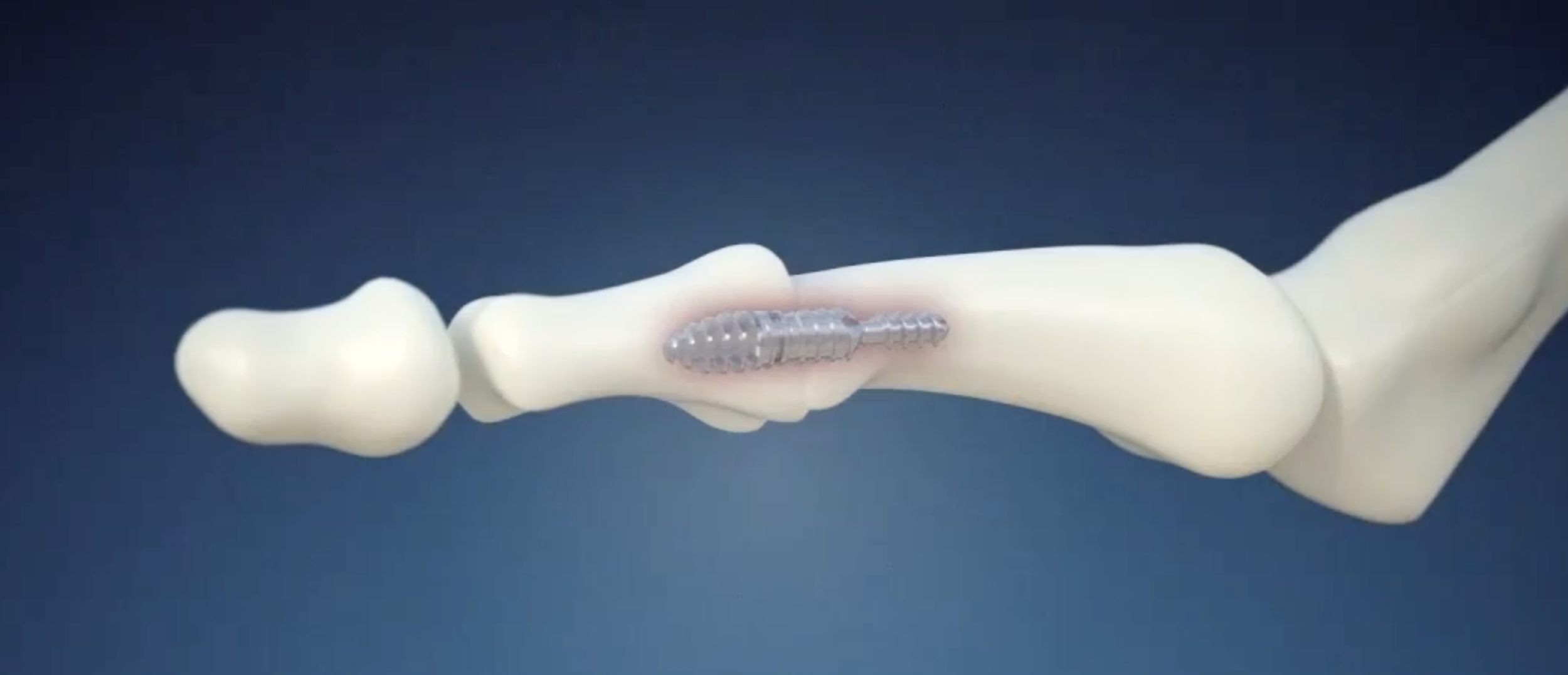
Do you experience any of the following issues with your bunions?
Pain over your bunion
Difficulty wearing shoes
Concerned with your foot’s appearance
Learn more about Keyhole Bunion Surgery


